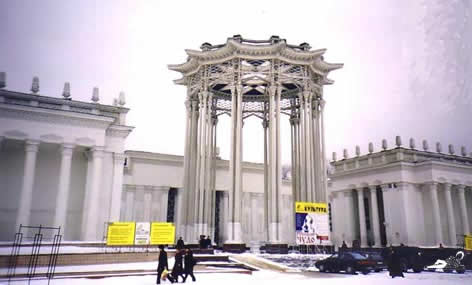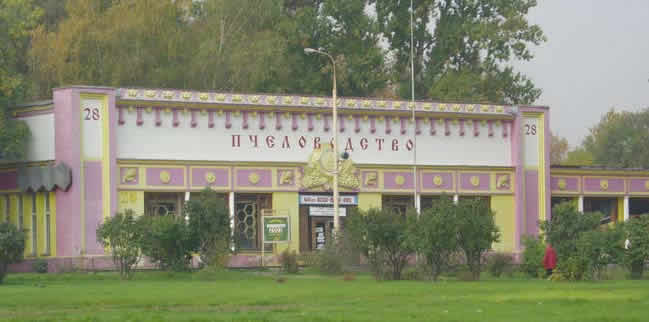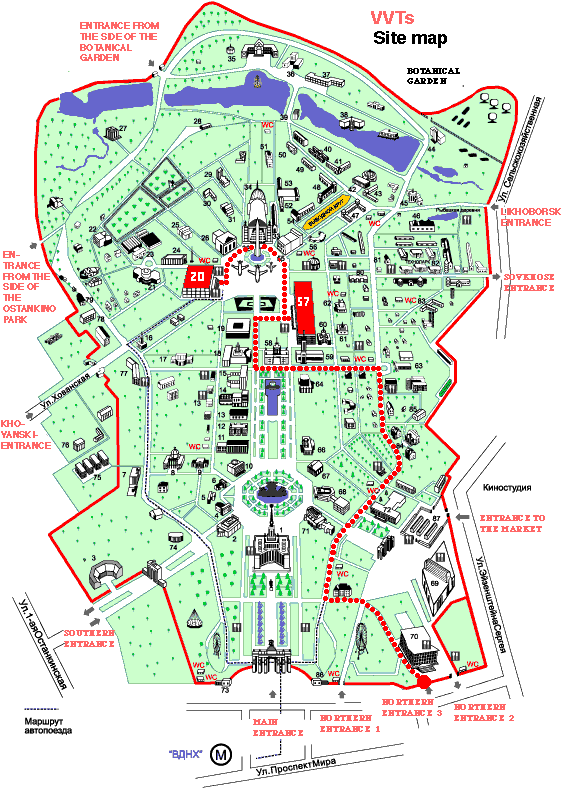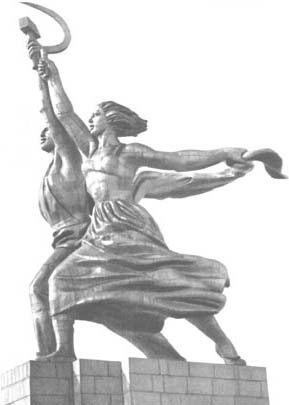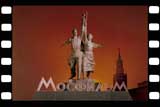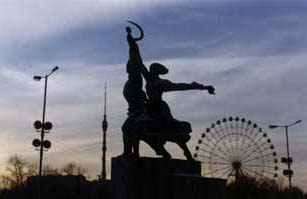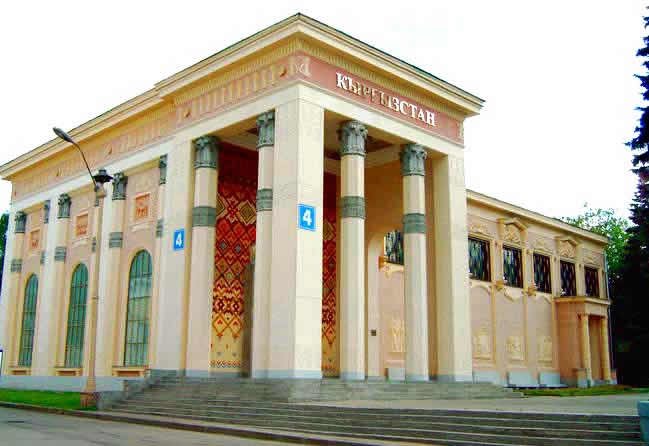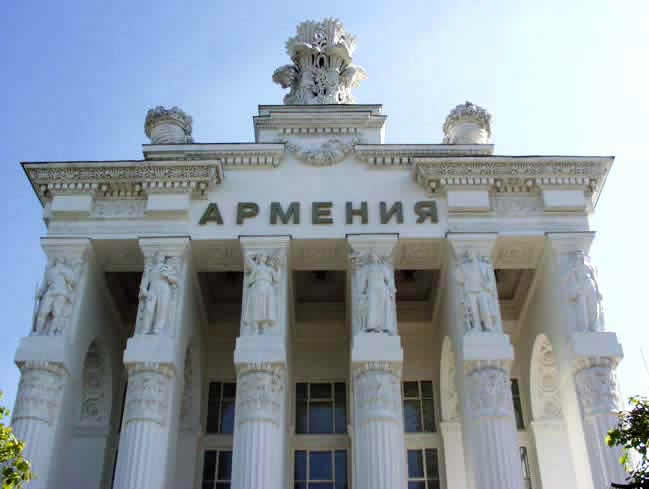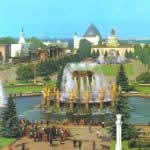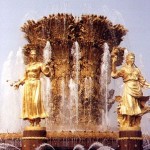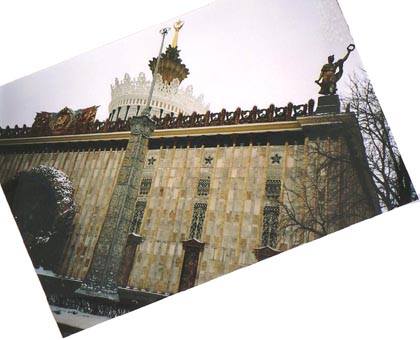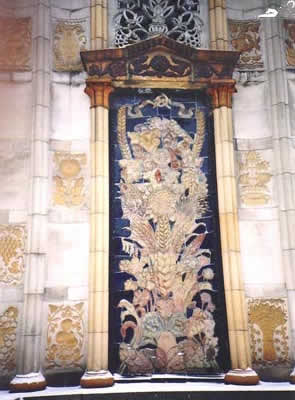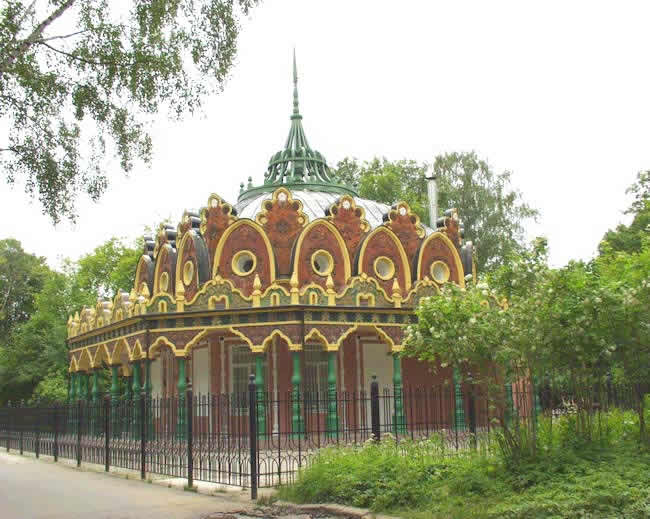Contemporary Moscow/Part Two
|
VDNKh – the exposition of Soviet progress VDNKh – Vystavka Dostizheniy Narodnovo Khosyaistva = Exhibition of the Achievements of National Economy, is nowadays called officially VVTs – All-Russian Center for Exhibitions. It was renamed in 1992 by a decree by Boris Jelzin, and has been trying to present itself as an exhibition center. It got started, though, as something quite different.
VDNKh was originally constructed as the Exhibition of Agriculture of the Whole Soviet Union, and opened in 1939. It was meant – together with other exhibition parks, as the one for industry near the Crimean Wall, and the one for construction, on the Frunze-Quay – to show to the citizens of the capital and to all visitors the achievements of socialist economy. It had, on the contrary to its tasks today, no commercial caracter at all. It was a place for education and for recreation. And, of course, for propaganda. People should admire the technical achievements the socialist system was capable to produce as it had eliminated all destructive competition, freed the creative spirits of man which in capitalism are supressed and reached a nivel of cooperation unseen so far in these lands.
The technical achievements of Soviet Union are undisputed even today by people who are not blinded by ideological onesidedness. But still, the visitors of the exhibition could not gain knowledge of the access of the country’s citizens to these achievements. A new agricultural machine might be capable of real miracles – but how many agricultural entities would get it in the next ten years in order to enjoy the progress of science? The gap between scientifical development and its realization in the sphere of production has always been a kind of brake block in every Soviet style economy.
The exhibition area already in those days covered 136 hectares with 250 buildings of different size. There were ponds and fountains, and places to eat. At the Northern Entrance stood the most famous statue of Soviet art: The statue of the "Worker and the Kolkhose-woman" by Vera Mukhina.
During World War II, and for nine more years the exhibition park was closed. After thorough reconstruction – the area was enlarged to 207 hectares, and the amount of buildings rose to 383 – it was reopened in 1954. The new main entrance was right beside the underground station that leads to the exhibition. Finally in 1958 it was decided to unite the agricultural, industrial and construction exhibitions in this area and the new united exhibition park was renamed VDNKh. Already before that certain pavilions had been built or changed in order to represent the economic developments in the various republics-entities united in Soviet Union, such as Georgia, Aserbaidzhan, or the Baltic States.
After Soviet Union was gone harsh times started for the exposition grounds. No one was in need any more to advertise Soviet progress. To the new politicians devoted to the promotion of Market Economy VDNKh became a both financial and ideological burden. First, its maintainance cost money without bringing profit. Second, it was a uncomfortable witness of times gone by, a huge monument that proved that the Soviet system did have its advantages and did produce acknowledgeable results.
All these disadvantages exist besides other necessities of today’s business that the buildings of VDNKh are lacking: electric cables of high capacity, sockets everywhere, standing lines for computers, multiple telephone lines ... All manageable, but only with money. Already some of the original buildings of the area have been torn down, in order to create space for new "modern" ones. In the end, the Stalin-era style of temple-like, palace-like buildings, of overloaded, tsarist era decorations, of gold and stucco, can always be questioned. As Pilate asked: "What is Truth?", one can always ask: "What is Beauty?" and declare the whole Stalin-era architecture obsolete, worthy only of the manure heap of history. And replace it with "modern", "adequate", and most of all: profitable! buildings of concrete and steel and glass, as in Shanghai, and New York, and Hongkong, and Berlin, and Stockholm, and Paris, and London ... |
It is very dangerous to live in Moscow if you are a "businessman",
that is someone connected to the redistribution of nationalised property
that took place during the 90-ies. And it is also dangerous if you are
a journalist who wants to investigate how these "New Russians",
the new rich (and very rich!), came into the possession of their huge
property.
In Russia, due to the use of hard drugs and the horrible conditions in
Russian prisons – Russia has one of the highest prison inmate rates
in the world, only equalled by the USA – there is an infection rate
of AIDS that approaches epidemic proportions. Other contagious diseases,
such as tuberculosis and hepatitis B and C, are also progressing. Alcoholism,
suicide and emigration are furthermore having a severe impact on population
development. Russia’s population has decreased sharply, due to the
increase in the average mortality age, and infant mortality, and the decrease
in births. "Who wants to give birth nowadays?" a woman on the
train asked me. "What for? To create beggars?"
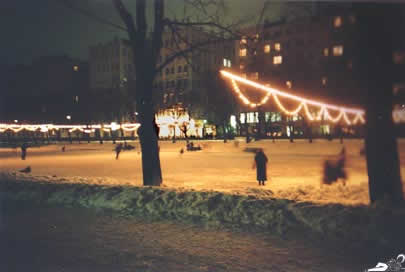 |
People skating on the ice of the pond in the "Chistye Prudy" (=clean ponds) park, situated in Central Moscow |
And still, with all these atrocities taking place, and the real threat from terrorists (and perhaps the Secret Service?) who blow up or assault underground trains and underground stations, residence blocks and theatres, Moscow is still a safer place for the individual than many cities in Western Europe and the USA. If you are an adult, not a businessman, and you don’t look like you come from the Caucasus or other parts of the world, like Africa or the Far East – nobody cares for you. In case you don’t correspond to that – watch out!
Moscow, more than other parts of Russia I’ve been to, evokes the famous saying of Tyuchev:
"Russia you can’t grasp/comprehend
with your mind
you can’t measure it with the Arshin (a measure unit from old times)
it has an unique form,
you can only believe in it."
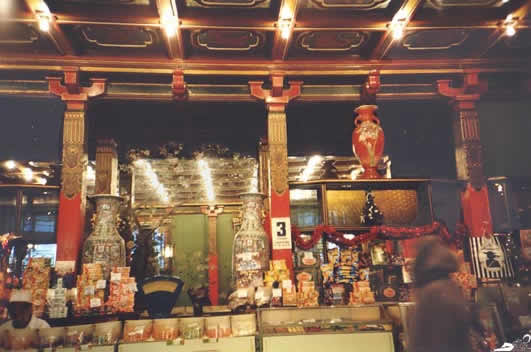 |
|
A tea shop in Central Moscow
|
